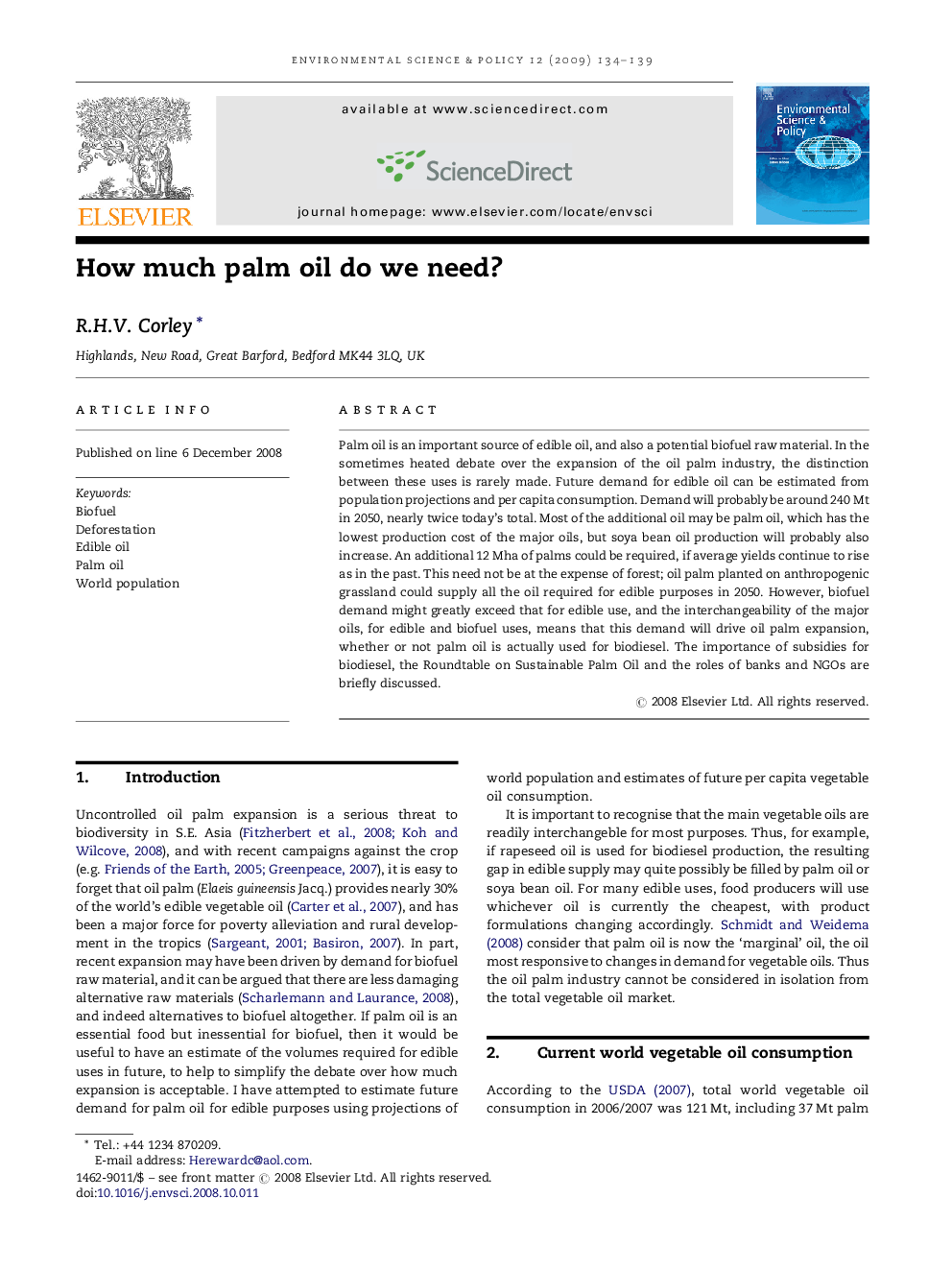| Article ID | Journal | Published Year | Pages | File Type |
|---|---|---|---|---|
| 1054213 | Environmental Science & Policy | 2009 | 6 Pages |
Palm oil is an important source of edible oil, and also a potential biofuel raw material. In the sometimes heated debate over the expansion of the oil palm industry, the distinction between these uses is rarely made. Future demand for edible oil can be estimated from population projections and per capita consumption. Demand will probably be around 240 Mt in 2050, nearly twice today's total. Most of the additional oil may be palm oil, which has the lowest production cost of the major oils, but soya bean oil production will probably also increase. An additional 12 Mha of palms could be required, if average yields continue to rise as in the past. This need not be at the expense of forest; oil palm planted on anthropogenic grassland could supply all the oil required for edible purposes in 2050. However, biofuel demand might greatly exceed that for edible use, and the interchangeability of the major oils, for edible and biofuel uses, means that this demand will drive oil palm expansion, whether or not palm oil is actually used for biodiesel. The importance of subsidies for biodiesel, the Roundtable on Sustainable Palm Oil and the roles of banks and NGOs are briefly discussed.
